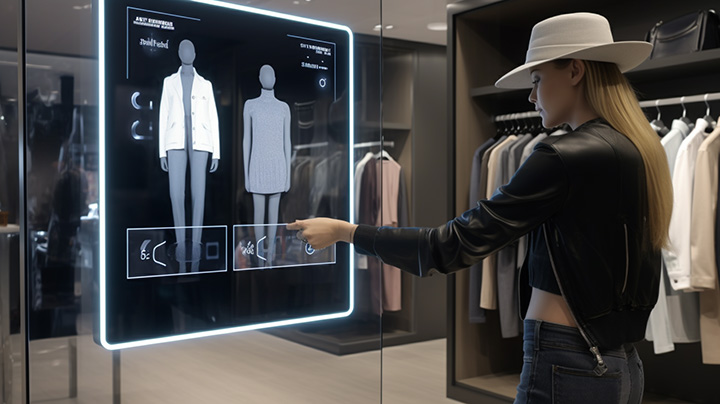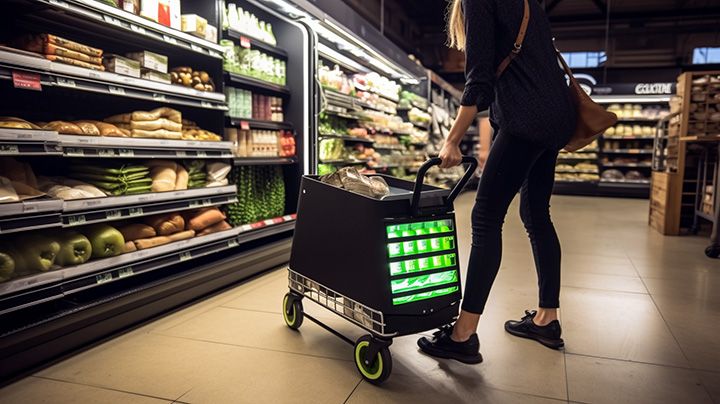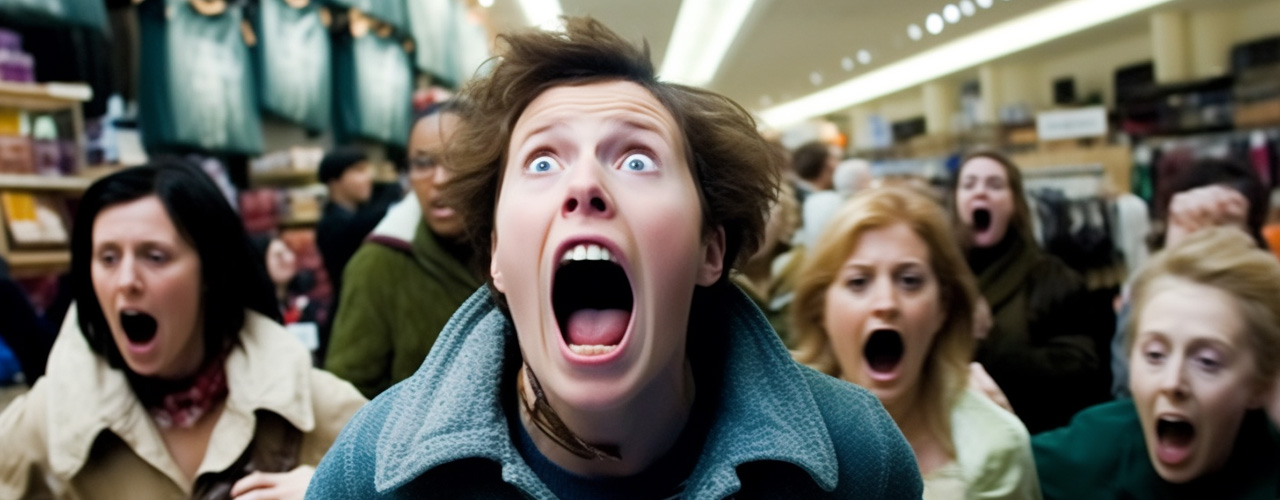Retail 2.0: Revenge of the Store
Lenosca Mascarenhas /
Although the world managed to survive the pandemic, it caused inevitable shifts in how people think about various aspects of their lives. Overall e-commerce order volume witnessed a growth of 69.4% year-on-year in FY22. The average share of internet users who made purchases online increased from 33% in developing countries before the pandemic to more than 60% following the onset of the pandemic. We were witness to how Covid 19 took a toll on physical retail stores, forcing many to shut down. The abrupt shift left many retailers scrambling to effectively serve customers through digital channels. Of course, once Covid receded, retail stores did open back up, but they realised the need to up their game and innovate the shopping experience for the customer to counter the ever-growing threat from online shopping.
So how are retailers driving customers back to brick-and-mortar stores? Here are 5 examples of how retailers are creating the store of the future.
1. Smart Mirrors

One of the biggest pain points while shopping for clothes is the availability of trial rooms. So some brands have started installing smart mirrors that help shoppers dress virtually. Shoppers can virtually try on various garments and sizes, allowing them to see how different clothes look (The users can see themselves virtually wearing the clothes through the mirror reflection) before making the purchase. This also helps shoppers who have hygiene concerns, very little time or who do not want to try on multiple products that are kept on the store’s shelves.
American Rag, a mainstay of California culture has been recognized as one of the most innovative and trendsetting retailers in the United States. Installing smart mirrors across the store has helped increase their sales by building engagement and personalized recommendations.
2. Auto Checkouts

The hassle of waiting in long queues is something we all have been through. Even though brands have introduced self-checkouts this still doesn’t cut the line of not having to wait. Which probably led to the introduction of an auto checkout. A technology which has sensors installed across the store which can identify when a customer picks up an item or returns a product. Upon exiting the store, the store’s app automatically deducts the amount whilst walking past the checkout.
Amazon has revolutionised the online shopping experience and is now keen on taking a slice of the physical retail pie by using Auto checkout. Amazon has leveraged this form of technology into its very first store with no checkout required.
3. Try and Test

Trying on apparel for fit, size and look remains the biggest advantage that offline stores have over online stores. We’ve all tried on a pair of shoes at a store and paced back and forth to ensure it is the perfect fit before making a purchase. Retailers are now transforming this try before you buy experience with an innovative playable shopping experience. Brands have installed playgrounds across their store encouraging customers to try on the product they’d like to purchase and climb walls or swing across monkey bars, allowing them to test the fit before purchasing. Not only is this shopping experience unique but also fun at the same time.
Dish and Duer, is renowned for designing a wide range of denim that doesn’t just look stylish but performs well on and off the trail. To show proof of the product, they’ve adapted this kind of playable shopping experience with their in-store performance denim playground, encouraging their customers to put their denim to the test in order to find the right denim fit before purchase.
4. Playability

Brands today want to ensure consumers have made the perfect purchase when selecting a product. The shoes you try on might fit perfectly, look good and have no trouble walking or running a few steps but when you go to play football or long run, your legs hurt. It could be because you have a pronation/supination (how your weight is distributed as you walk or run). Not all of us know about it. But now using technology to capture data and analyse body movements, the store can recommend the perfect fit tailored to the customer’s movements.
The new Nike flagship store reflects Nike’s commitment to innovation in a big way. The company has been leveraging its retail and sports technology expertise to bring the latest products to its in-store customers at every opportunity that arises. Nike’s experience-focused approach to its flagship store has created an activity centre where fitness and sports fans can network and hang out whilst being active and on the move. The in-store technology is designed to give customers insights into their sporting performances. Areas like the basketball court, treadmills and football zones have cameras to record the customer’s body movements, analyse the data and suggest the most suitable pair. Additionally, customers can also access these recordings from the Nike app through their accounts. This allows them to share content on social media thus gaining more customers to visit the store through this hype created.
5. Naked Tech

Consumers want to know every detail of an ingredient or benefit in a product or a specific material before purchase. Brands have incorporated the Instagrammable lens into their stores which allows customers to scan a product through an app lens which will reveal all the information about the product such as its name, ingredients, properties and benefits.
A Lush store in Harajuku, Japan has adopted this into their store and created its own #LushLabs app as its primary source of product information and in-store interactivity. The store is dedicated solely to the sale of their variety of bath bombs, soaps and other cosmetic ranges which are neatly placed on shelving units around the edges of the retail space, as well as on sushi-style conveyor belts. Due to environmental reasons, they are very much against using packaging unless strictly necessary. Thus making shoppers select products that appeal to them by their visual appeal and scent. They then scan the product with the Lush Lens which shows all the information about the product. This is in place of an in-store assistant and chalkboards commonly encountered in brick-and-mortar shops.
Will physical retail regain lost ground and beat e-commerce at its own game?
Difficult to answer this question with certainty but it’s safe to say that physical stores aren’t going to disappear anytime soon. My hypothesis is that both online and physical retail will eventually evolve to dominate two different kinds of shopping behaviour. E-commerce is likely to be the primary choice for buying everyday essentials and repeat purchases such as groceries, daily-use household items, etc. However, physical retail will be a preference for more involved, less frequent, higher-value purchases such as high-end apparel, luxury goods, etc. Whether my hypothesis turns out to be true or not, what I can say with certainty is that, in the years to come, we are going to see the true convergence of digital technologies and the physical store, leading to a whole host of disruptive “Phygital” shopping experiences.
References
- https://www.forbes.com/sites/bennyhareven/2021/10/31/why-cinema-still-beats-home-cinema/?sh=61e7d34b1858
- https://www.forbes.com/sites/forbescommunicationscouncil/2018/01/23/the-future-of-brick-and-mortar-enhancing-the-customer-experience/?sh=377e953a3ce3
- https://www.monotype.com/resources/articles/where-digital-and-physical-meet-the-future-of-retail
- https://www.collectique.eu/en/5-reasons-why-customers-prefer-to-shop-in-store-instead-of-online/
- https://www.appearhere.co.uk/inspire/blog/shops-of-the-future
- https://www.vendhq.com/blog/experiential-retail/
- https://youtu.be/NrmMk1Myrxc





